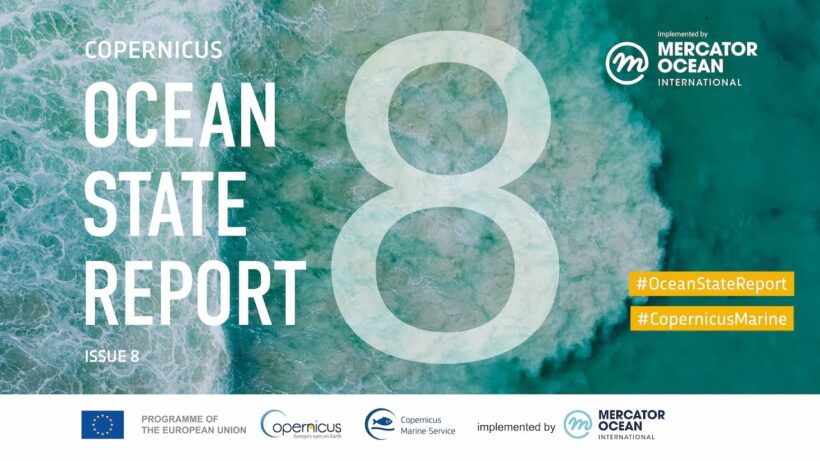According to the latest Ocean State Report (OSR 8) from EU Copernicus, the world’s oceans are experiencing rapid warming, increasing acidification, more marine heat waves and more algal blooms in recent years compared to previous decades.
In particular, the report highlighted that ocean warming has nearly doubled since 2005, and it had already been steadily increasing since 1960. The previous long-term rate of warming was at 0.58 watts per square meter. In the past two decades, that rate has reached 1.05 watts per square meter.
According to the report, 75% of northern hemisphere ocean surfaces are warming faster than the global average, while 35% of southern hemisphere ocean surfaces are warming faster than average. This warming leads to multiple disruptions to ecosystems, including increasing coastal erosion and flooding, decreasing sea ice and increasing tropical cyclone intensity.
As the U.S. National Oceanic and Atmospheric Administration (NOAA) reported, hurricanes require water surface temperatures of at least 80 degrees Fahrenheit (27 degrees Celsius) and a storm or other weather disturbance that can pull in air. Studies have shown links between warming ocean surface temperatures and more intense tropical storms, a link that is supported by the latest Ocean State Report.
The Ocean State Report revealed several other concerning impacts of warming on global oceans, including more intense and deeper marine heat waves that reached as far as 1,500 meters below the ocean surface. As of last year, 22% of the global ocean surface experienced a severe to extreme marine heat wave.
Amid this level of ocean warming, sea ice has declined extensively, with a 4% loss per decade in the Arctic since 1979. In the Antarctic, sea ice loss reached a record low, with 1.9 million square kilometers of sea ice lost in 2023 compared to the average from 1993 to 2010. This Antarctic sea ice loss represents an area about three times larger than France.
Algal blooms are another problem brought on by changing ocean temperatures. In particular, an unexpected cold spell near Crete in 2022 led to a 50% more intense phytoplankton bloom than expected for the area. Extreme phytoplankton blooms can affect the entire ecosystem by blocking sunlight for marine life, and dying phytoplankton can further deplete oxygen in the water, worsening the acidification. According to OSR8, ocean acidification has increased 35% since 1985.
Another concern highlighted in the report is increasing wave heights, with the tallest 5% of waves globally reaching even greater heights in the past few years. Taller waves can increase risk of coastal flooding, coastal erosion, and destruction to coastal infrastructure.
Some regions are already experiencing these impacts. As EU Copernicus reported, a storm brought 7-meter-tall waves that lasted more than 9 seconds in the port of Melilla, Spain in April 2022.
“This, in turn, drove waves within the harbour to a record-breaking 1.41 m, disturbing maritime operations,” the report noted. “Simulations indicate that similar extreme waves are likely to happen in the region in 25 years time, significantly sooner than previous analysis suggested.”
Paige Bennett: Based in Los Angeles, Paige is a writer who is passionate about sustainability. She earned her Bachelor’s degree in Journalism from Ohio University and holds a certificate in Women’s, Gender and Sexuality Studies. She also specialized in sustainable agriculture while pursuing her undergraduate degree.






